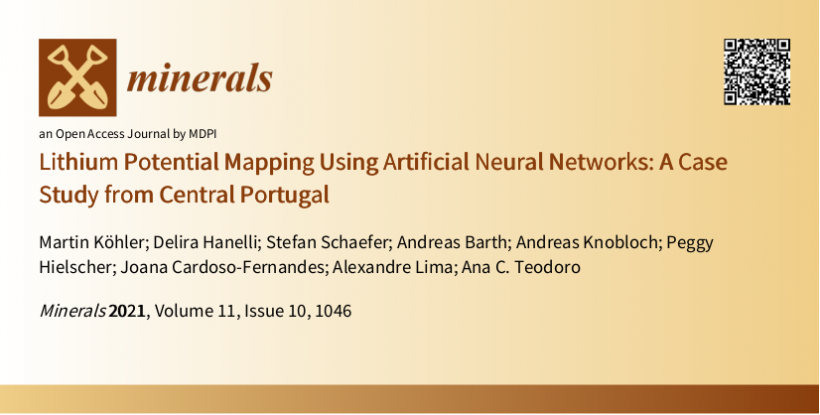Köhler, M.; Hanelli, D.; Schaefer, S.; Barth, A.; Knobloch, A.; Hielscher, P.; Cardoso-Fernandes, J.; Lima, A.; Teodoro, A.C. Lithium Potential Mapping Using Artificial Neural Networks: A Case Study from Central Portugal. Minerals 2021, 11, 1046. https://doi.org/10.3390/min11101046
The growing importance and demand of lithium (Li) for industrial applications, in particular rechargeable Li-ion batteries, have led to a significant increase in exploration efforts for Li-bearing minerals. To ensure and expand a stable Li supply to the global economy, extensive research and exploration are necessary. Artificial neural networks (ANNs) provide powerful tools for exploration target identification. They can be cost-effectively applied in various geological settings. This article presents an integrated approach of Li exploration targeting using ANNs for data interpretation. Based on medium resolution geological maps (1:50,000) and stream sediment geochemical data (1 sample per 0.25 km2), the Li potential was calculated for an area of approximately 1200 km2 in the surroundings of Bajoca Mine (Northeast Portugal). Extensive knowledge about geological processes leading to Li mineralisation (such as weathering conditions and diverse Li minerals) proved to be a determining factor in the exploration model. Furthermore, Sentinel-2 satellite imagery was used in a separate ANN model to identify potential Li mine sites exposed on the ground surface by analysing the spectral signature of surface reflectance in well-known Li locations. Finally, the results were combined to design a final map of predicted Li mineralisation occurrences in the study area. The proposed approach reveals how remote sensing data in combination with geological and geochemical data can be used for delineating and ranking exploration targets of almost any deposit type.
Read the full article.

